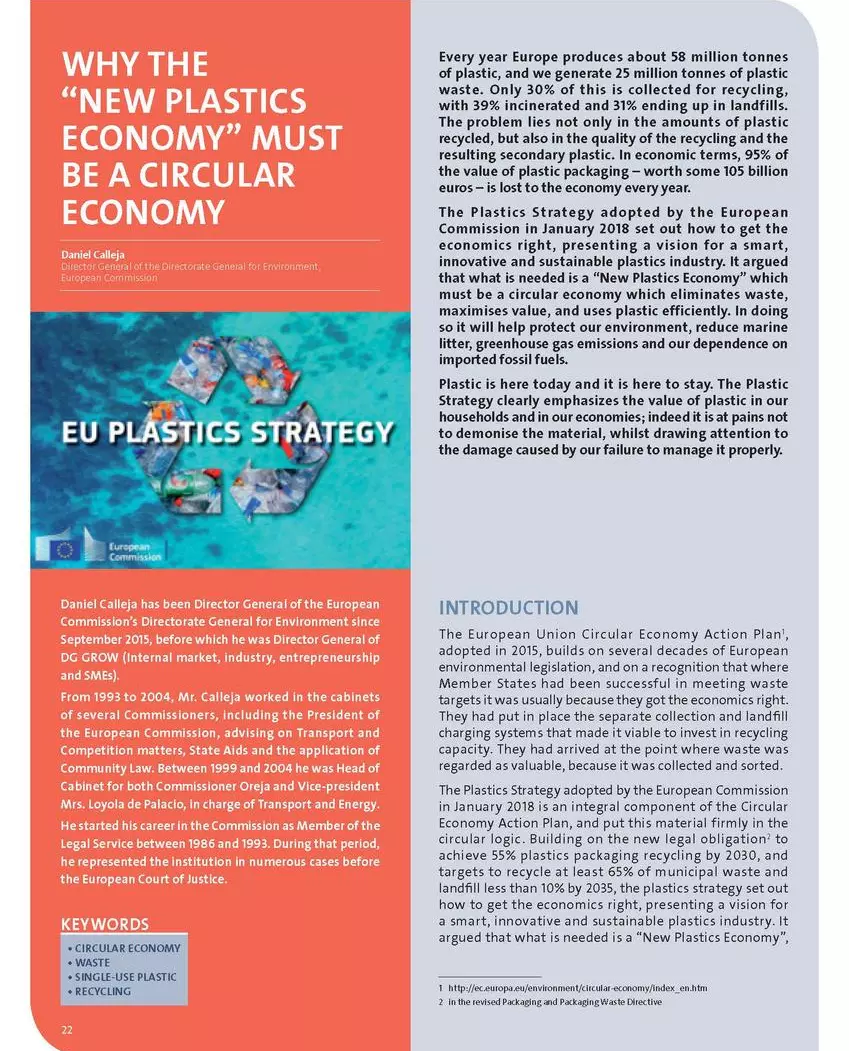By Daniel Calleja
Director General of the Directorate General for Environment, European Commission
Every year Europe produces about 58 million tonnes of plastic, and we generate 25 million tonnes of plastic waste. Only 30% of this is collected for recycling, with 39% incinerated and 31% ending up in landfills. The problem lies not only in the amounts of plastic recycled, but also in the quality of the recycling and the resulting secondary plastic. In economic terms, 95% of the value of plastic packaging – worth some 105 billion euros – is lost to the economy every year.
The Plastics Strategy adopted by the European Commission in January 2018 set out how to get the economics right, presenting a vision for a smart, innovative and sustainable plastics industry. It argued that what is needed is a “New Plastics Economy” which must be a circular economy which eliminates waste, maximises value, and uses plastic efficiently. In doing so it will help protect our environment, reduce marine litter, greenhouse gas emissions and our dependence on imported fossil fuels.
Plastic is here today and it is here to stay. The Plastic Strategy clearly emphasizes the value of plastic in our households and in our economies; indeed it is at pains not to demonise the material, whilst drawing attention to the damage caused by our failure to manage it properly.



